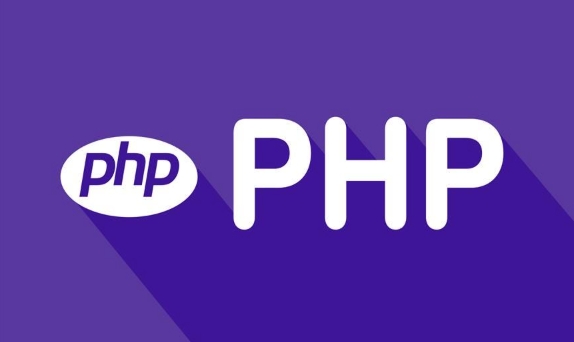The key to writing PHP comments is to explain the logic and intention rather than just describe the operation. 1. The comment should explain "why" rather than "what was done", such as explaining that the user is activated because of the mailbox verification is completed; 2. Function comments need to clarify the input and output and boundary conditions, including the meaning of the parameter, return value and error handling methods; 3. Paragraph comments should be added to indicate the functions of each code block, such as verification, conversion, and library entry; 4. Update the comments in a timely manner to avoid obsoleteness and misleading, and can be used through code review and IDE plug-in assisted inspection.

Writing PHP comments is not just as simple as writing an explanation. Many people write comments just simply mark "What does this function do", but truly useful comments can make people understand logic, intention and potential pitfalls at a glance.

The following aspects are something that is easy to ignore but very critical when writing PHP comments.
Explain "why" with comments instead of "what did"
Many people's comments are as follows:

// Set the user status to activate $user->setStatus(1);
This is actually unnecessary. The code itself already clearly expresses "what was done". What really needs to be commented is the reasons or context behind it, such as:
// Activate the user because they have completed the email verification process $user->setStatus(1);
In this way, when others look at this code, they know that this operation is not set at will, but is supported by business logic.

suggestion:
- When encountering special judgments, state changes, and non-intuitive logic, the reasons behind them are preferred.
- Write some hidden business rules into comments to facilitate subsequent maintenance.
- Especially for some temporary changes (such as fixing a specific bug), the cause and background must be indicated.
Function comments should clarify input and output and boundary conditions
PHP's DocBlock is powerful, but many people only use @param and @return , ignoring more critical information.
A clear function comment should include:
- The specific meaning of parameters (not just types)
- Possible situations for returning values (such as returning an array successfully, and returning false if failed)
- How to deal with special cases (such as empty arrays, null values)
For example:
/**
* Obtain the user's public information*
* @param int $userId User unique identifier* @return array|false Return user data successfully, if the user does not exist, it returns false
*
* Note: This method does not throw an exception, and all errors are returned in false */
function getUserPublicInfo(int $userId)
{
// ...
}In this way, the caller can know in advance how to handle the return value without having to flip through the implementation details.
Add "paragraph subtitle" comments to complex logic
Sometimes a piece of code will handle multiple steps, such as first checking, then converting, and then entering the library. At this time, you can add a brief comment before each block to explain the function of the current paragraph.
For example:
// 1. Verify whether the input is legal if (empty($data['name'])) {
throw new InvalidArgumentException('The name cannot be empty');
}
// 2. Convert the data format $data['created_at'] = date('Ymd H:i:s', strtotime($data['created_at']));
// 3. Insert the database $db->insert('users', $data);This approach allows readers to quickly grasp the code structure, especially for longer methods or scripts.
Don't be afraid to update comments, but also avoid "outdated comments"
Once the comment is written incorrectly or not updated in time, it will mislead people. So every time you modify the code, it is best to check whether the relevant comments are still accurate.
You can do this:
- Add comment checking items to code review
- Use the IDE plugin to remind you which comments may be invalid
- For frequently changing modules, reduce lengthy comments appropriately and use concise instructions instead
Basically that's it. Writing comments is not to make up the lines, but to make it easier for others (including their future self) to read. It is actually not difficult to do this. The key is to develop habits and think about problems from the perspective of readers.
The above is the detailed content of Beyond Basic PHP Comments: Writing for Clarity. For more information, please follow other related articles on the PHP Chinese website!

Hot AI Tools

Undress AI Tool
Undress images for free

Undresser.AI Undress
AI-powered app for creating realistic nude photos

AI Clothes Remover
Online AI tool for removing clothes from photos.

Clothoff.io
AI clothes remover

Video Face Swap
Swap faces in any video effortlessly with our completely free AI face swap tool!

Hot Article

Hot Tools

Notepad++7.3.1
Easy-to-use and free code editor

SublimeText3 Chinese version
Chinese version, very easy to use

Zend Studio 13.0.1
Powerful PHP integrated development environment

Dreamweaver CS6
Visual web development tools

SublimeText3 Mac version
God-level code editing software (SublimeText3)

Hot Topics
 How to use PHP to build social sharing functions PHP sharing interface integration practice
Jul 25, 2025 pm 08:51 PM
How to use PHP to build social sharing functions PHP sharing interface integration practice
Jul 25, 2025 pm 08:51 PM
The core method of building social sharing functions in PHP is to dynamically generate sharing links that meet the requirements of each platform. 1. First get the current page or specified URL and article information; 2. Use urlencode to encode the parameters; 3. Splice and generate sharing links according to the protocols of each platform; 4. Display links on the front end for users to click and share; 5. Dynamically generate OG tags on the page to optimize sharing content display; 6. Be sure to escape user input to prevent XSS attacks. This method does not require complex authentication, has low maintenance costs, and is suitable for most content sharing needs.
 How to use PHP combined with AI to achieve text error correction PHP syntax detection and optimization
Jul 25, 2025 pm 08:57 PM
How to use PHP combined with AI to achieve text error correction PHP syntax detection and optimization
Jul 25, 2025 pm 08:57 PM
To realize text error correction and syntax optimization with AI, you need to follow the following steps: 1. Select a suitable AI model or API, such as Baidu, Tencent API or open source NLP library; 2. Call the API through PHP's curl or Guzzle and process the return results; 3. Display error correction information in the application and allow users to choose whether to adopt it; 4. Use php-l and PHP_CodeSniffer for syntax detection and code optimization; 5. Continuously collect feedback and update the model or rules to improve the effect. When choosing AIAPI, focus on evaluating accuracy, response speed, price and support for PHP. Code optimization should follow PSR specifications, use cache reasonably, avoid circular queries, review code regularly, and use X
 PHP creates a blog comment system to monetize PHP comment review and anti-brush strategy
Jul 25, 2025 pm 08:27 PM
PHP creates a blog comment system to monetize PHP comment review and anti-brush strategy
Jul 25, 2025 pm 08:27 PM
1. Maximizing the commercial value of the comment system requires combining native advertising precise delivery, user paid value-added services (such as uploading pictures, top-up comments), influence incentive mechanism based on comment quality, and compliance anonymous data insight monetization; 2. The audit strategy should adopt a combination of pre-audit dynamic keyword filtering and user reporting mechanisms, supplemented by comment quality rating to achieve content hierarchical exposure; 3. Anti-brushing requires the construction of multi-layer defense: reCAPTCHAv3 sensorless verification, Honeypot honeypot field recognition robot, IP and timestamp frequency limit prevents watering, and content pattern recognition marks suspicious comments, and continuously iterate to deal with attacks.
 PHP calls AI intelligent voice assistant PHP voice interaction system construction
Jul 25, 2025 pm 08:45 PM
PHP calls AI intelligent voice assistant PHP voice interaction system construction
Jul 25, 2025 pm 08:45 PM
User voice input is captured and sent to the PHP backend through the MediaRecorder API of the front-end JavaScript; 2. PHP saves the audio as a temporary file and calls STTAPI (such as Google or Baidu voice recognition) to convert it into text; 3. PHP sends the text to an AI service (such as OpenAIGPT) to obtain intelligent reply; 4. PHP then calls TTSAPI (such as Baidu or Google voice synthesis) to convert the reply to a voice file; 5. PHP streams the voice file back to the front-end to play, completing interaction. The entire process is dominated by PHP to ensure seamless connection between all links.
 How to use PHP to combine AI to generate image. PHP automatically generates art works
Jul 25, 2025 pm 07:21 PM
How to use PHP to combine AI to generate image. PHP automatically generates art works
Jul 25, 2025 pm 07:21 PM
PHP does not directly perform AI image processing, but integrates through APIs, because it is good at web development rather than computing-intensive tasks. API integration can achieve professional division of labor, reduce costs, and improve efficiency; 2. Integrating key technologies include using Guzzle or cURL to send HTTP requests, JSON data encoding and decoding, API key security authentication, asynchronous queue processing time-consuming tasks, robust error handling and retry mechanism, image storage and display; 3. Common challenges include API cost out of control, uncontrollable generation results, poor user experience, security risks and difficult data management. The response strategies are setting user quotas and caches, providing propt guidance and multi-picture selection, asynchronous notifications and progress prompts, key environment variable storage and content audit, and cloud storage.
 PHP realizes commodity inventory management and monetization PHP inventory synchronization and alarm mechanism
Jul 25, 2025 pm 08:30 PM
PHP realizes commodity inventory management and monetization PHP inventory synchronization and alarm mechanism
Jul 25, 2025 pm 08:30 PM
PHP ensures inventory deduction atomicity through database transactions and FORUPDATE row locks to prevent high concurrent overselling; 2. Multi-platform inventory consistency depends on centralized management and event-driven synchronization, combining API/Webhook notifications and message queues to ensure reliable data transmission; 3. The alarm mechanism should set low inventory, zero/negative inventory, unsalable sales, replenishment cycles and abnormal fluctuations strategies in different scenarios, and select DingTalk, SMS or Email Responsible Persons according to the urgency, and the alarm information must be complete and clear to achieve business adaptation and rapid response.
 Beyond the LAMP Stack: PHP's Role in Modern Enterprise Architecture
Jul 27, 2025 am 04:31 AM
Beyond the LAMP Stack: PHP's Role in Modern Enterprise Architecture
Jul 27, 2025 am 04:31 AM
PHPisstillrelevantinmodernenterpriseenvironments.1.ModernPHP(7.xand8.x)offersperformancegains,stricttyping,JITcompilation,andmodernsyntax,makingitsuitableforlarge-scaleapplications.2.PHPintegrateseffectivelyinhybridarchitectures,servingasanAPIgateway
 PHP integrated AI speech recognition and translator PHP meeting record automatic generation solution
Jul 25, 2025 pm 07:06 PM
PHP integrated AI speech recognition and translator PHP meeting record automatic generation solution
Jul 25, 2025 pm 07:06 PM
Select the appropriate AI voice recognition service and integrate PHPSDK; 2. Use PHP to call ffmpeg to convert recordings into API-required formats (such as wav); 3. Upload files to cloud storage and call API asynchronous recognition; 4. Analyze JSON results and organize text using NLP technology; 5. Generate Word or Markdown documents to complete the automation of meeting records. The entire process needs to ensure data encryption, access control and compliance to ensure privacy and security.






